The Economic Gap between East and West Germany
The group uses innovative methods to investigate why the economy in eastern Germany is still lagging behind that in western Germany – and what role the privatisation process 30 years ago played in this.
The main project of the group investigates the privatisation of former GDR businesses by the Treuhandanstalt. To what extent did the qualifications of the selected managers or their networking with other decision-makers play a role? How would eastern German firms be performing today if exclusively the most talented entrepreneurs had been put in charge? The group uses data at a micro level (firms, managers, patents, ideas) in order to answer macroeconomic questions with the help of a model estimation. The second research project analyses why highly innovative firms are established less frequently in eastern than in western Germany, and also examines the role of migrants in economic growth and knowledge creation in Germany. Finally, the third research project looks for reasons for the slowing productivity growth in Europe using CompNet data.
Research Cluster
Economic Dynamics and StabilityYour contact

Mitglied - Department Structural Change and Productivity
Refereed Publications
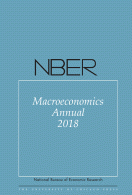
Networks and the Macroeconomy: An Empirical Exploration
in: NBER Macroeconomics Annual, 2015
Abstract
How small shocks are amplified and propagated through the economy to cause sizable fluctuations is at the heart of much macroeconomic research. Potential mechanisms that have been proposed range from investment and capital accumulation responses in real business-cycle models (e.g., Kydland and Prescott 1982) to Keynesian multipliers (e.g., Diamond 1982; Kiyotaki 1988; Blanchard and Kiyotaki 1987; Hall 2009; Christiano, Eichenbaum, and Rebelo 2011); to credit market frictions facing firms, households, or banks (e.g., Bernanke and Gertler 1989; Kiyotaki and Moore 1997; Guerrieri and Lorenzoni 2012; Mian, Rao, and Sufi 2013); to the role of real and nominal rigidities and their interplay (Ball and Romer 1990); and to the consequences of (potentially inappropriate or constrained) monetary policy (e.g., Friedman and Schwartz 1971; Eggertsson and Woodford 2003; Farhi and Werning 2013).

The Schumpeterian Growth Paradigm
in: Annual Review of Economics, 2015
Abstract
In this review, we argue that the Schumpeterian growth paradigm, which models growth as resulting from innovations involving creative destruction, sheds light on several aspects of the growth process that cannot be properly addressed by alternative theories. We focus on three important aspects for which Schumpeterian growth theory delivers predictions that distinguish it from other growth models, namely, (a) the role of competition and market structure, (b) firm dynamics, and (c) the relationship between growth and development.
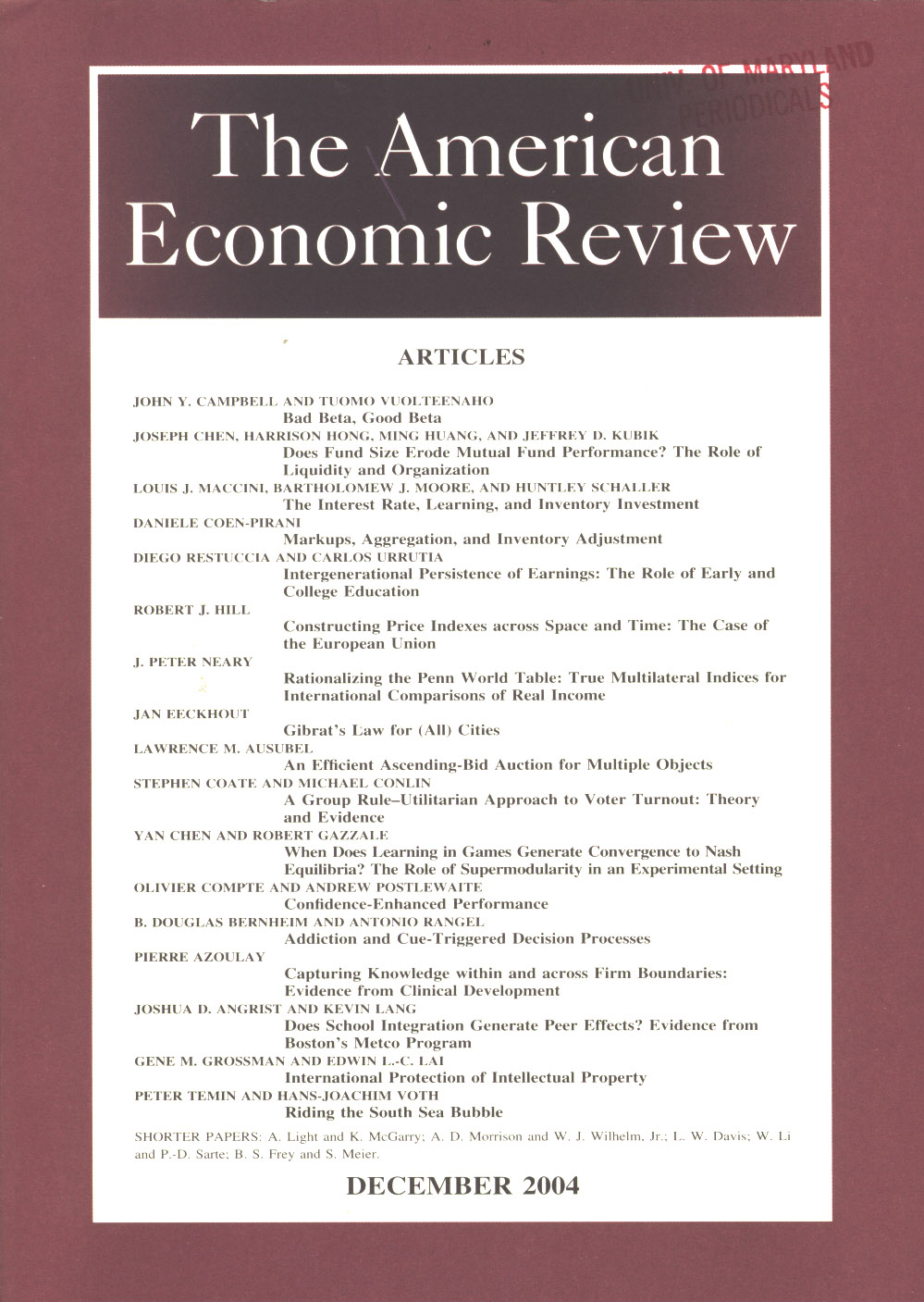
Lessons from Schumpeterian Growth Theory
in: American Economic Review, No. 5, 2015
Abstract
By operationalizing the notion of creative destruction, Schumpeterian growth theory generates distinctive predictions on important microeconomic aspects of the growth process (competition, firm dynamics, firm size distribution, cross-firm and cross-sector reallocation) which can be confronted using rich micro data. In this process the theory helps reconcile growth with industrial organization and development economics.
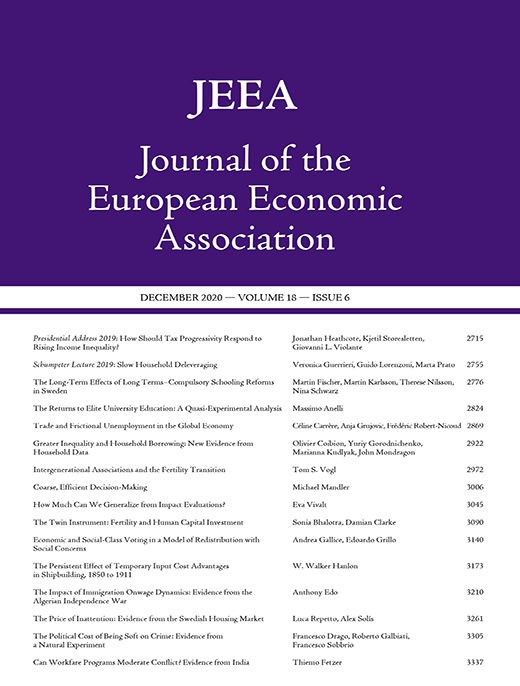
Intellectual Property Rights Policy, Competition and Innovation
in: Journal of the European Economic Association, No. 1, 2012
Abstract
To what extent and in what form should the intellectual property rights (IPR) of innovators be protected? Should a company with a large technology lead over its rivals receive the same IPR protection as a company with a more limited advantage? In this paper, we develop a dynamic framework for the study of the interactions between IPR and competition, in particular to understand the impact of such policies on future incentives. The economy consists of many industries and firms engaged in cumulative (step-by-step) innovation. IPR policy regulates whether followers in an industry can copy the technology of the leader. We prove the existence of a steady-state equilibrium and characterize some of its properties. We then quantitatively investigate the implications of different types of IPR policy on the equilibrium growth rate and welfare. The most important result from this exercise is that full patent protection is not optimal; instead, optimal policy involves state-dependent IPR protection, providing greater protection to technology leaders that are further ahead than those that are close to their followers. This is because of a trickle-down effect: providing greater protection to firms that are further ahead of their followers than a certain threshold increases the R&D incentives also for all technology leaders that are less advanced than this threshold.
Working Papers
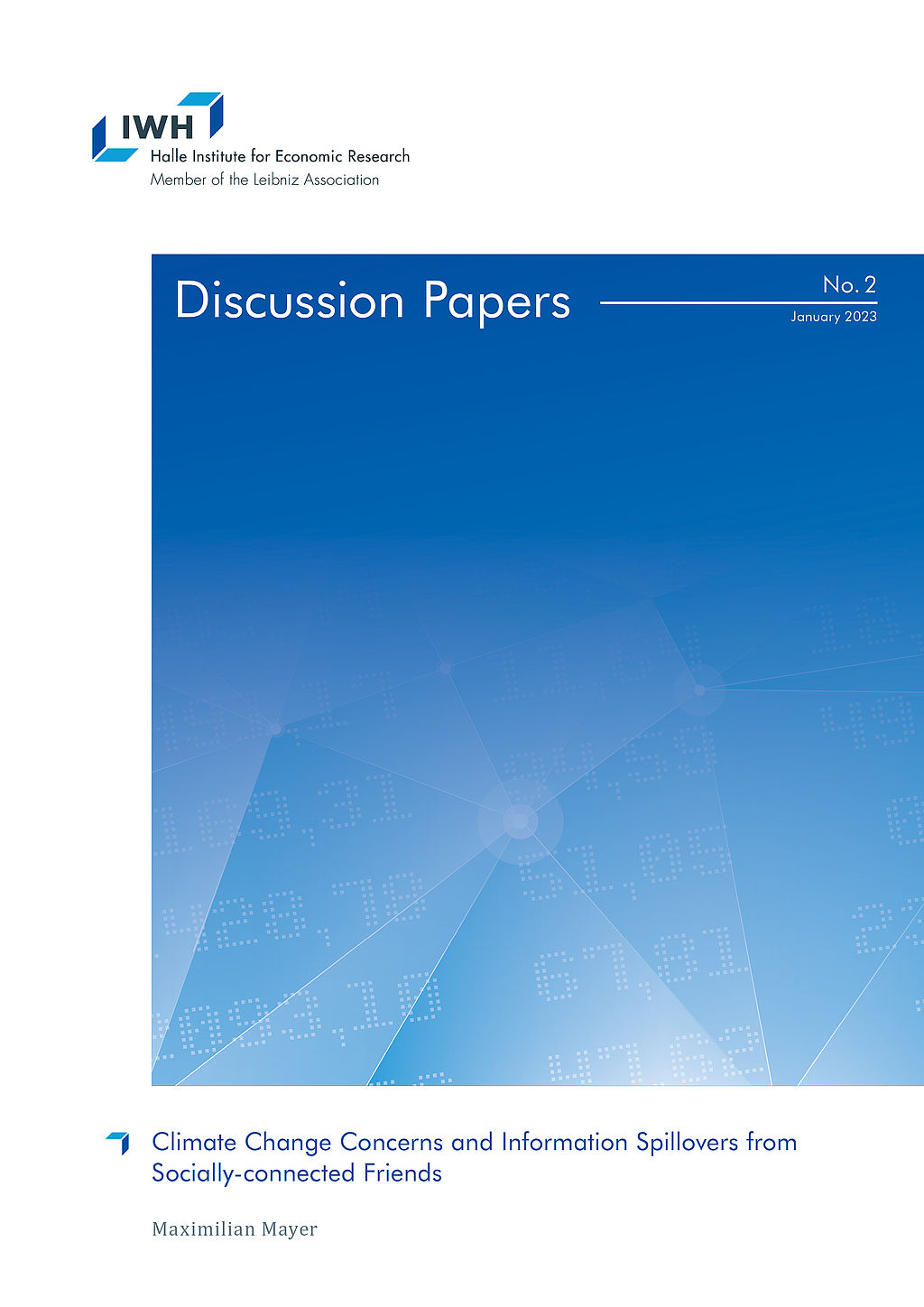
Climate Change Concerns and Information Spillovers from Socially-connected Friends
in: IWH Discussion Papers, No. 2, 2023
Abstract
This paper studies the role of social connections in shaping individuals’ concerns about climate change. I combine granular climate data, region-level social network data and survey responses for 24 European countries in order to document large information spillovers. Individuals become more concerned about climate change when their geographically distant friends living in sociallyconnected regions have experienced large increases in temperatures since 1990. Exploring the heterogeneity of the spillover effects, I uncover that the learning via social networks plays a central role. Further, results illustrate the important role of social values and economic preferences for understanding how information spillovers affect individual concerns.
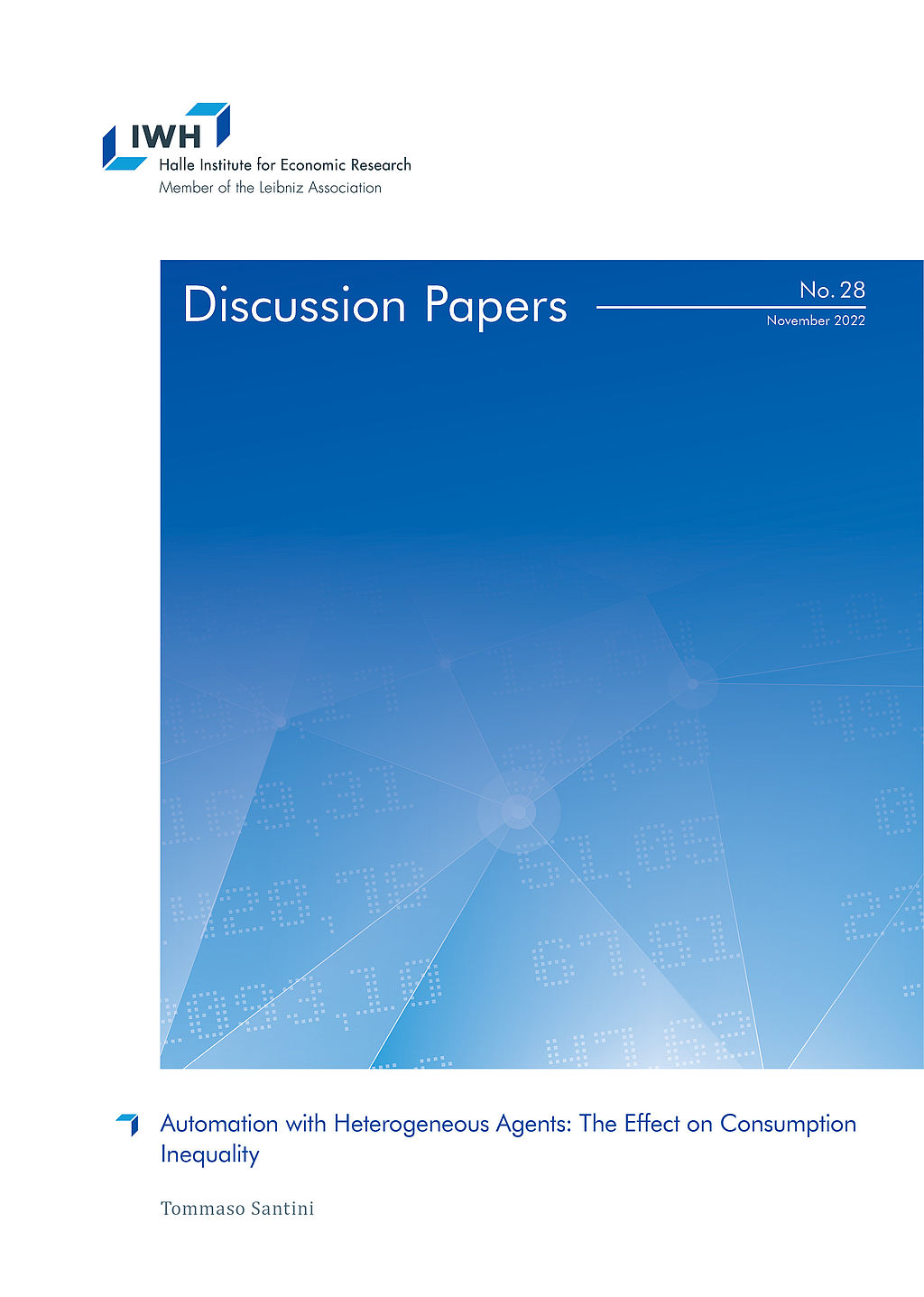
Automation with Heterogeneous Agents: The Effect on Consumption Inequality
in: IWH Discussion Papers, No. 28, 2022
Abstract
In this paper, I study technological change as a candidate for the observed increase in consumption inequality in the United States. I build an incomplete market model with educational choice combined with a task-based model on the production side. I consider two channels through which technology affects inequality: the skill that an agent can supply in the labor market and the level of capital she owns. In a quantitative analysis, I show that (i) the model replicates the increase in consumption inequality between 1981 and 2008 in the US (ii) educational choice and the return to wealth are quantitatively important in explaining the increase in consumption inequality.
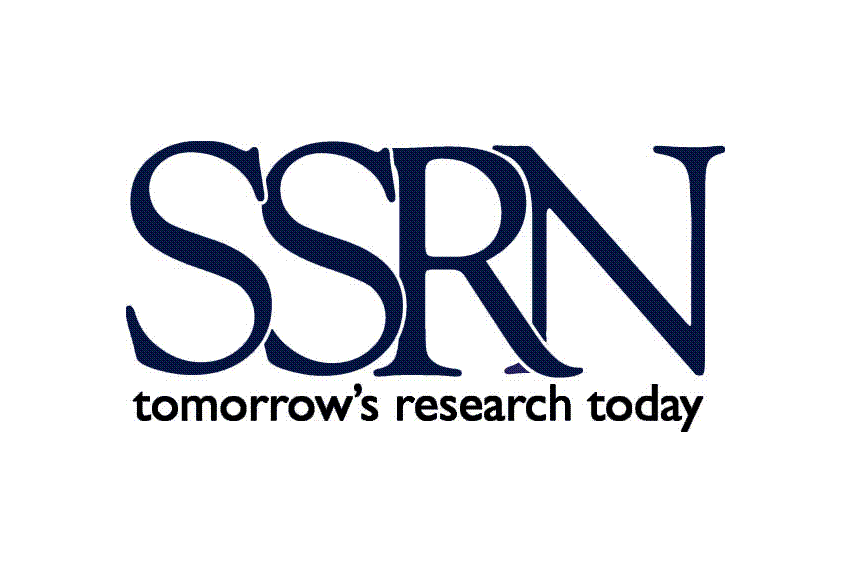
The Value of Firm Networks: A Natural Experiment on Board Connections
in: SAFE Working Papers, No. 269, 2022
Abstract
We present causal evidence on the effect of boardroom networks on firm value and compensation policies. We exploit a ban on interlocking directorates of Italian financial and insurance companies as exogenous variation and show that firms that lose centrality in the network experience negative abnormal returns around the announcement date. The key driver of our results is the role of boardroom connections in reducing asymmetric information. The complementarities with the input-output and cross-ownership networks are consistent with this channel. Using hand-collected data, we also show that network centrality has a positive effect on directors’ compensation, providing evidence of rent sharing.
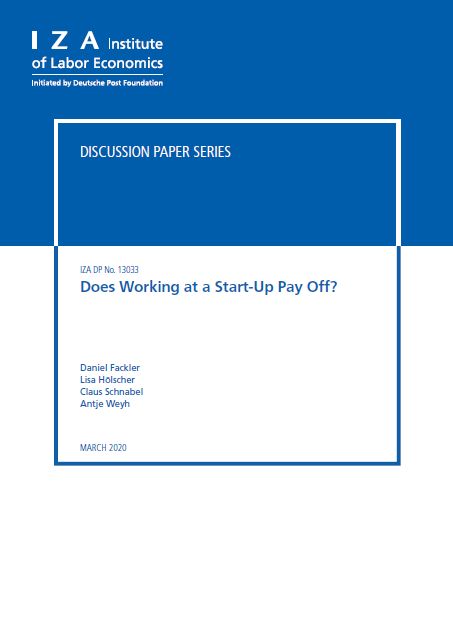
Automation, Globalization and Vanishing Jobs: A Labor Market Sorting View
in: IZA Discussion Paper, No. 13267, 2020
Abstract
We show, theoretically and empirically, that the effects of technological change associated with automation and offshoring on the labor market can substantially deviate from standard neoclassical conclusions when search frictions hinder efficient assortative matching between firms with heterogeneous tasks and workers with heterogeneous skills. Our key hypothesis is that better matches enjoy a comparative advantage in exploiting automation and a comparative disadvantage in exploiting offshoring. It implies that automation (offshoring) may reduce (raise) employment by lengthening (shortening) unemployment duration due to higher (lower) match selectivity. We find empirical support for this implication in a dataset covering 92 occupations and 16 sectors in 13 European countries from 1995 to 2010.
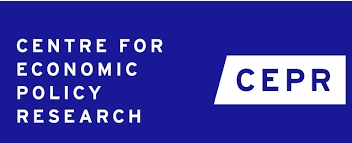
The Value of Firm Networks: A Natural Experiment on Board Connections
in: CEPR Discussion Papers, No. 14591, 2020
Abstract
This paper presents causal evidence of the effects of boardroom networks on firm value and compensation policies. We exploit exogenous variation in network centrality arising from a ban on interlocking directorates of Italian financial and insurance companies. We leverage this shock to show that firms whose centrality in the network rises after the reform experience positive abnormal returns around the announcement date and are better hedged against shocks. Information dissemination plays a central role: results are driven by firms that have higher idiosyncratic volatility, low analyst coverage, and more uncertainty surrounding their earnings forecasts. Firms benefit more from boardroom centrality when they are more central in the input-output network, hence more susceptible to upstream shocks, when they are less central in the cross-ownership network, or when they have low profitability or low growth opportunities. Network centrality also results in higher directors' compensation, due to rent sharing and improved executives' outside option, and more similar compensation policies between connected firms.












